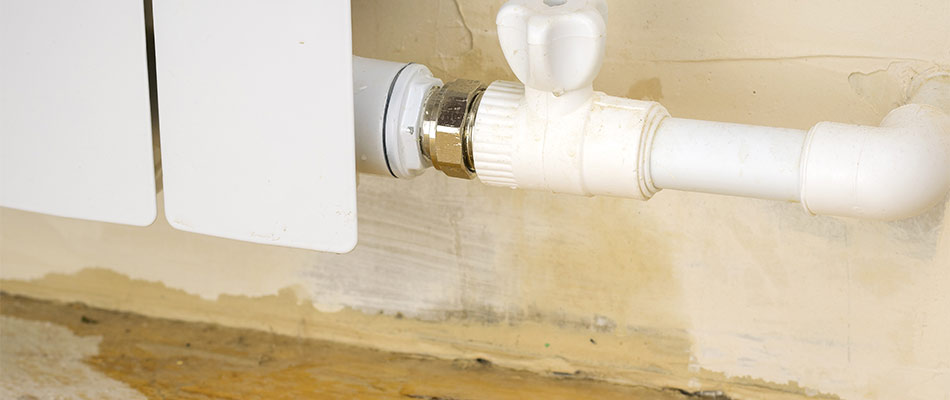6 Ways to Discover Concealed Water Leaks in Your House
6 Ways to Discover Concealed Water Leaks in Your House
Blog Article
Every person seems to have their unique opinion in relation to Top leak detection hacks.

Early detection of dripping water lines can alleviate a potential catastrophe. In addition to conserving you money, it will lessen the worry and also irritation. The minute you find a leakage, calling your plumber for repair services is the best remedy. Some small water leakages might not be visible. If you can not identify it with your naked eyes, right here are some hacks that aid.
1. Check Out the Water Meter
Examining it is a surefire means that aids you discover leakages. If it moves, that indicates a fast-moving leak. This indicates you might have a slow leakage that could even be below ground.
2. Check Water Intake
Evaluate your water costs and track your water intake. As the one paying it, you should discover if there are any type of disparities. If you spot sudden changes, despite your usage being the same, it implies that you have leaks in your plumbing system. Remember, your water bill should drop under the exact same range each month. An unexpected spike in your costs suggests a fast-moving leakage.
At the same time, a consistent rise each month, despite having the same practices, reveals you have a slow-moving leak that's also slowly rising. Call a plumber to completely inspect your residential or commercial property, specifically if you really feel a warm area on your floor with piping beneath.
3. Do a Food Coloring Test
When it pertains to water consumption, 30% comes from toilets. Test to see if they are running appropriately. Decline flecks of food color in the storage tank and wait 10 minutes. There's a leak in between the container and dish if the shade somehow infiltrates your bowl throughout that time without flushing.
4. Asses Exterior Lines
Do not neglect to examine your outdoor water lines also. Should water seep out of the connection, you have a loosened rubber gasket. One tiny leak can lose bunches of water and increase your water expense.
5. Inspect and Assess the Situation
Homeowners should make it a routine to check under the sink counters as well as even inside cupboards for any kind of bad odor or mold and mildew development. These 2 warnings indicate a leak so punctual focus is required. Doing regular examinations, even bi-annually, can save you from a major issue.
Examine for stainings as well as compromising as most appliances and pipes have a life expectancy. If you presume dripping water lines in your plumbing system, don't wait for it to rise.
Early detection of leaking water lines can mitigate a potential disaster. Some tiny water leakages might not be visible. Inspecting it is a proven method that aids you find leaks. One small leak can lose loads of water as well as increase your water bill.
If you suspect leaking water lines in your plumbing system, don't wait for it to intensify.
WARNING SIGNS OF WATER LEAKAGE BEHIND THE WALL
PERSISTENT MUSTY ODORS
As water slowly drips from a leaky pipe inside the wall, flooring and sheetrock stay damp and develop an odor similar to wet cardboard. It generates a musty smell that can help you find hidden leaks.
MOLD IN UNUSUAL AREAS
Mold usually grows in wet areas like kitchens, baths and laundry rooms. If you spot the stuff on walls or baseboards in other rooms of the house, it’s a good indicator of undetected water leaks.
STAINS THAT GROW
When mold thrives around a leaky pipe, it sometimes takes hold on the inside surface of the affected wall. A growing stain on otherwise clean sheetrock is often your sign of a hidden plumbing problem.
PEELING OR BUBBLING WALLPAPER / PAINT
This clue is easy to miss in rooms that don’t get much use. When you see wallpaper separating along seams or paint bubbling or flaking off the wall, blame sheetrock that stays wet because of an undetected leak.
BUCKLED CEILINGS AND STAINED FLOORS
If ceilings or floors in bathrooms, kitchens or laundry areas develop structural problems, don’t rule out constant damp inside the walls. Wet sheetrock can affect adjacent framing, flooring and ceilings.
https://www.servicemasterbyzaba.com/blog/how-to-detect-water-leakage-in-walls/

We had been shown that write-up on Hacks to detect leaks from an associate on a different web property. Make sure you set aside a second to distribute this article if you liked it. Thanks for your time. Please pay a visit to our website back soon.
Report this page